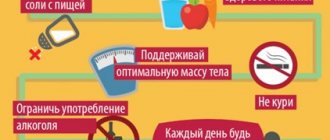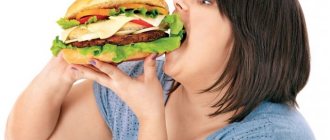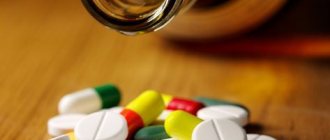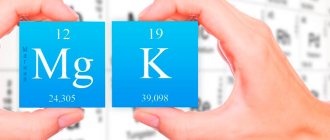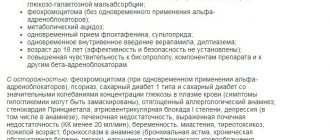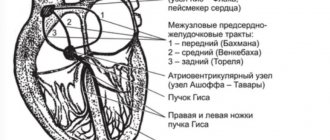May 23, 2012
Did the examination show elevated blood cholesterol levels? Find out how to adjust your diet.
Elevated blood cholesterol levels are one of the most serious risk factors for developing cardiovascular diseases.
Cholesterol itself is not dangerous for the body and is even necessary for a number of vital processes. However, an excess amount of this substance can settle on the walls of blood vessels and clog them.
Therefore, to prevent cardiovascular diseases, experts recommend not to indulge in foods rich in cholesterol.
General rules
Hypercholesterolemia is an increased level of cholesterol in the blood, which is a risk factor for atherosclerosis . 80% of cholesterol is produced by the liver and 20% comes from outside with foods. On the one hand, it is necessary for the formation of enzymes, vitamin D3 , hormones , and bile acids . On the other hand, when it is in excess and metabolic processes are disrupted, it becomes the cause of a serious disease - atherosclerosis, against the background of which coronary heart disease , stroke , or the blood supply to the limbs, kidneys or intestines is disrupted.
Not only high cholesterol content is considered dangerous, but also an imbalance between its fractions - lipoproteins (they have an atherogenic effect) and high-density lipoproteins (they have an anti-atherogenic effect). High levels of LDL cholesterol (also called “bad” cholesterol) indicate a risk of cardiovascular disease. In this regard, everyone, even young people and those who consider themselves healthy, need to monitor their lipoprotein spectrum in order to maintain health and activity for many years.
To normalize cholesterol levels, a special diet based on a rational and healthy diet has been developed. A diet for hypercholesterolemia can be used as part of treatment, disease prevention and for general health. Its goal is to eliminate metabolic disorders and lose weight. Its basis is a reduction in animal fat and carbohydrates (fast, easily digestible) in the diet and a predominance of polyunsaturated fats (vegetable oils, seeds, nuts), fiber and complex carbohydrates (vegetables, fruits, grains).
The protein content is within the physiological norm due to the consumption of lean meats and legumes. The amount of bread should not exceed 200 g per day. Salt, the amount of liquid consumed up to 1.3 liters and extractive substances are limited. Increased amount of vitamins ( C and B ), potassium, magnesium.
Dishes are prepared without salt, but it is allowed to add a little salt to the prepared food. Vegetables with coarse fiber are stewed, meat and fish are boiled or baked. Meals are provided 5 times a day. The daily caloric content of the diet is 1400-1500 kcal. It is important to eat before 19.00, and for dinner you need to consume more plant fiber. If you feel hungry after dinner, you can drink low-fat kefir, eat carrots or an apple.
The basic principles of this nutrition can be formulated as follows:
- Consumption of complex carbohydrates and fiber (grains, vegetables, fruits). They should make up 60% of the total diet. It is recommended to eat 600 g of berries, fruits and vegetables per day (300-400 g are allocated for them) and 200-300 g of grain products. A third of vegetables should be fresh.
- Maintaining a balance of fats, with a predominance of monounsaturated and polyunsaturated (vegetable oils).
- Consume low-fat dairy products in moderation.
- Give preference to fish, chicken, turkey, with lean beef in the background.
- No more than 2-3 eggs per week, and protein is not limited.
- Reduce the amount of salt to a minimum.
- Dinner no later than 19:00.
- It is forbidden to allow yourself to feel hungry (for this there are snacks with vegetables and fruits), because after this the body begins to work to increase fat reserves.
- Prevent calcium deficiency with an appropriate drug.
- For greater effectiveness, it is better to combine the diet with physical activity.
Low-cholesterol diet - table No. 10: is it possible to eat halva?
Low-cholesterol diet - table No. 10: is it possible to eat halva?
Halva has been a favorite delicacy since childhood. This oriental sweet is made from vegetable oils with added sugar. With a hypocholesterol diet - table No. 10, it is forbidden to eat sweets, as metabolism is disrupted.
Remember: One molecule of sugar turns into two molecules of “bad” fat.
But “harmful” cholesterol is animal fats, which are not found in halva. Therefore, the question: is it possible to eat halva can be answered ambiguously: both yes and no. On the one hand, halva is made from vegetable oils, but on the other hand, it is very high in calories and contains a lot of sugar. If you still want to treat yourself to this delicacy, then you can eat 50-100 grams of halva once a month - nothing bad will happen. Naturally, this product should not be abused.
Authorized Products
The diet for hypercholesterolemia involves the consumption of vegetarian soups, as well as soups prepared in secondary broth. To do this, boil beef or chicken for 10 minutes in a small amount of water. The first water is drained, the meat is washed and refilled with water and cooked until cooked. In the secondary broth, you need to carefully skim off the fat. This way you can cook cabbage soup and borscht. Potatoes are added in minimal quantities. Initially, lean meat and poultry are chosen - it could be beef, chicken or turkey.
When cooking poultry, the skin should not be used, and fat from the meat, if present, must be trimmed off. It is better to boil, bake or steam meat for main courses. You can serve with a small amount of porridge (oatmeal, buckwheat and brown rice), but preferably vegetable side dishes (all types of cabbage, carrots, eggplant, zucchini, pumpkin, beets) or salads of fresh vegetables and green peas. All kinds of vegetable oils are used to season ready-made dishes. The oils are exclusively virgin and unrefined.
Most of the meals should be made from sea fish, not meat. The best dietary varieties are: hake, blue whiting, pollock, navaga, pollock, river haddock - pike. Bread made from rye, as well as from grain flour and with bran is allowed.
You can bake your own low-fat cookies from oatmeal or soy flour, as well as unsweetened bread from whole grain flour with the addition of bran and flax seeds and use them instead of bread. Milk and fermented milk products are consumed with low fat content, and eggs are allowed up to 2-3 per week (boiled or omelettes).
Tea and weak coffee with the addition of skim milk, vegetable juices, natural berry or fruit juices without sugar are allowed.
Table of permitted products
| Proteins, g | Fats, g | Carbohydrates, g | Calories, kcal | |
Vegetables and greens | ||||
| eggplant | 1,2 | 0,1 | 4,5 | 24 |
| beans | 6,0 | 0,1 | 8,5 | 57 |
| zucchini | 0,6 | 0,3 | 4,6 | 24 |
| cabbage | 1,8 | 0,1 | 4,7 | 27 |
| broccoli | 3,0 | 0,4 | 5,2 | 28 |
| Brussels sprouts | 4,8 | 0,0 | 8,0 | 43 |
| cauliflower | 2,5 | 0,3 | 5,4 | 30 |
| corn | 3,5 | 2,8 | 15,6 | 101 |
| green onion | 1,3 | 0,0 | 4,6 | 19 |
| bulb onions | 1,4 | 0,0 | 10,4 | 41 |
| carrot | 1,3 | 0,1 | 6,9 | 32 |
| cucumbers | 0,8 | 0,1 | 2,8 | 15 |
| squash | 0,6 | 0,1 | 4,3 | 19 |
| salad pepper | 1,3 | 0,0 | 5,3 | 27 |
| parsley | 3,7 | 0,4 | 7,6 | 47 |
| salad | 1,2 | 0,3 | 1,3 | 12 |
| beet | 1,5 | 0,1 | 8,8 | 40 |
| celery | 0,9 | 0,1 | 2,1 | 12 |
| soybeans | 34,9 | 17,3 | 17,3 | 381 |
| asparagus | 1,9 | 0,1 | 3,1 | 20 |
| tomatoes | 0,6 | 0,2 | 4,2 | 20 |
| Jerusalem artichoke | 2,1 | 0,1 | 12,8 | 61 |
| pumpkin | 1,3 | 0,3 | 7,7 | 28 |
| dill | 2,5 | 0,5 | 6,3 | 38 |
| beans | 7,8 | 0,5 | 21,5 | 123 |
| garlic | 6,5 | 0,5 | 29,9 | 143 |
| lentils | 24,0 | 1,5 | 42,7 | 284 |
Fruits | ||||
| avocado | 2,0 | 20,0 | 7,4 | 208 |
| oranges | 0,9 | 0,2 | 8,1 | 36 |
| pomegranate | 0,9 | 0,0 | 13,9 | 52 |
| grapefruit | 0,7 | 0,2 | 6,5 | 29 |
| pears | 0,4 | 0,3 | 10,9 | 42 |
| lemons | 0,9 | 0,1 | 3,0 | 16 |
| mango | 0,5 | 0,3 | 11,5 | 67 |
| tangerines | 0,8 | 0,2 | 7,5 | 33 |
| nectarine | 0,9 | 0,2 | 11,8 | 48 |
| peaches | 0,9 | 0,1 | 11,3 | 46 |
| apples | 0,4 | 0,4 | 9,8 | 47 |
Berries | ||||
| gooseberry | 0,7 | 0,2 | 12,0 | 43 |
| Red currants | 0,6 | 0,2 | 7,7 | 43 |
| black currant | 1,0 | 0,4 | 7,3 | 44 |
Nuts and dried fruits | ||||
| nuts | 15,0 | 40,0 | 20,0 | 500 |
| almond | 18,6 | 57,7 | 16,2 | 645 |
| flax seeds | 18,3 | 42,2 | 28,9 | 534 |
| fenugreek seeds | 23,0 | 6,4 | 58,3 | 323 |
| sunflower seeds | 20,7 | 52,9 | 3,4 | 578 |
Cereals and porridges | ||||
| buckwheat (kernel) | 12,6 | 3,3 | 62,1 | 313 |
| oat groats | 12,3 | 6,1 | 59,5 | 342 |
| cereals | 11,9 | 7,2 | 69,3 | 366 |
| wheat bran | 15,1 | 3,8 | 53,6 | 296 |
Raw materials and seasonings | ||||
| basil | 2,5 | 0,6 | 4,3 | 27 |
| honey | 0,8 | 0,0 | 81,5 | 329 |
Dairy | ||||
| kefir 0% | 3,0 | 0,1 | 3,8 | 30 |
| kefir 1% | 2,8 | 1,0 | 4,0 | 40 |
Cheeses and cottage cheese | ||||
| cottage cheese 0.6% (low fat) | 18,0 | 0,6 | 1,8 | 88 |
| curd tofu | 8,1 | 4,2 | 0,6 | 73 |
Meat products | ||||
| beef | 18,9 | 19,4 | 0,0 | 187 |
Bird | ||||
| chicken fillet | 23,1 | 1,2 | 0,0 | 110 |
| turkey | 19,2 | 0,7 | 0,0 | 84 |
Eggs | ||||
| eggs | 12,7 | 10,9 | 0,7 | 157 |
Fish and seafood | ||||
| fish | 18,5 | 4,9 | 0,0 | 136 |
| seaweed | 0,8 | 5,1 | 0,0 | 49 |
Oils and fats | ||||
| grape seed oil | 0,0 | 99,9 | 0,0 | 899 |
| linseed oil | 0,0 | 99,8 | 0,0 | 898 |
| olive oil | 0,0 | 99,8 | 0,0 | 898 |
| sunflower oil | 0,0 | 99,9 | 0,0 | 899 |
Non-alcoholic drinks | ||||
| mineral water | 0,0 | 0,0 | 0,0 | — |
| * data is per 100 g of product | ||||
Fully or partially limited products
Pork, cooking fats, refined vegetable oil, margarine, butter, duck and goose meat, offal (kidneys, brains, liver), sausages and smoked meats are excluded.
Fatty fish, fish roe (contains a large amount of cholesterol ), crayfish, shrimp, crabs and any canned fish, including cod liver, are prohibited. You should not consume products made from puff pastry or butter dough, or highly extractive meat, fish, or mushroom broths.
Cream, fatty cottage cheese and sour cream are not allowed in the diet. Prohibition of consumption of chocolate, full-fat ice cream, products with cream and products with palm and coconut oil. Mayonnaise and ketchup should not be used as sauces.
Limit:
- beef (2 times a week);
- river and red fish;
- fatty cheeses;
- egg yolks;
- sugar and sweets;
- potato;
- buckwheat;
- nuts;
- honey;
- alcohol (maybe a glass of red wine once a week).
Table of prohibited products
| Proteins, g | Fats, g | Carbohydrates, g | Calories, kcal | |
Fruits | ||||
| bananas | 1,5 | 0,2 | 21,8 | 95 |
Berries | ||||
| grape | 0,6 | 0,2 | 16,8 | 65 |
Nuts and dried fruits | ||||
| raisin | 2,9 | 0,6 | 66,0 | 264 |
Cereals and porridges | ||||
| semolina | 10,3 | 1,0 | 73,3 | 328 |
| white rice | 6,7 | 0,7 | 78,9 | 344 |
Flour and pasta | ||||
| pasta | 10,4 | 1,1 | 69,7 | 337 |
Bakery products | ||||
| bagels | 16,0 | 1,0 | 70,0 | 336 |
| bagels | 16,0 | 1,0 | 70,0 | 336 |
| crackers | 11,2 | 1,4 | 72,2 | 331 |
Confectionery | ||||
| jam | 0,3 | 0,2 | 63,0 | 263 |
| jam | 0,3 | 0,1 | 56,0 | 238 |
| candies | 4,3 | 19,8 | 67,5 | 453 |
| pastry cream | 0,2 | 26,0 | 16,5 | 300 |
Ice cream | ||||
| ice cream | 3,7 | 6,9 | 22,1 | 189 |
Cakes | ||||
| cake | 4,4 | 23,4 | 45,2 | 407 |
Chocolate | ||||
| chocolate | 5,4 | 35,3 | 56,5 | 544 |
Raw materials and seasonings | ||||
| ketchup | 1,8 | 1,0 | 22,2 | 93 |
| mayonnaise | 2,4 | 67,0 | 3,9 | 627 |
Dairy | ||||
| cream | 2,8 | 20,0 | 3,7 | 205 |
| sour cream 30% | 2,4 | 30,0 | 3,1 | 294 |
| sour cream 40% (fat) | 2,4 | 40,0 | 2,6 | 381 |
Cheeses and cottage cheese | ||||
| cheese | 24,1 | 29,5 | 0,3 | 363 |
| cottage cheese 18% (fat) | 14,0 | 18,0 | 2,8 | 232 |
Meat products | ||||
| pork | 16,0 | 21,6 | 0,0 | 259 |
| pork liver | 18,8 | 3,6 | 0,0 | 108 |
| pork kidneys | 13,0 | 3,1 | 0,0 | 80 |
| pork fat | 1,4 | 92,8 | 0,0 | 841 |
| salo | 2,4 | 89,0 | 0,0 | 797 |
| beef liver | 17,4 | 3,1 | 0,0 | 98 |
| beef kidneys | 12,5 | 1,8 | 0,0 | 66 |
| beef brains | 9,5 | 9,5 | 0,0 | 124 |
| mutton | 15,6 | 16,3 | 0,0 | 209 |
Sausages | ||||
| smoked sausage | 16,2 | 44,6 | 0,0 | 466 |
| smoked sausage | 9,9 | 63,2 | 0,3 | 608 |
| sausages | 10,1 | 31,6 | 1,9 | 332 |
| sausages | 12,3 | 25,3 | 0,0 | 277 |
Bird | ||||
| smoked chicken | 27,5 | 8,2 | 0,0 | 184 |
| duck | 16,5 | 61,2 | 0,0 | 346 |
| smoked duck | 19,0 | 28,4 | 0,0 | 337 |
| goose | 16,1 | 33,3 | 0,0 | 364 |
Fish and seafood | ||||
| smoked fish | 26,8 | 9,9 | 0,0 | 196 |
| salted fish | 19,2 | 2,0 | 0,0 | 190 |
| Red caviar | 32,0 | 15,0 | 0,0 | 263 |
| black caviar | 28,0 | 9,7 | 0,0 | 203 |
| squid | 21,2 | 2,8 | 2,0 | 122 |
| shrimps | 22,0 | 1,0 | 0,0 | 97 |
| salmon | 19,8 | 6,3 | 0,0 | 142 |
| sturgeon | 16,4 | 10,9 | 0,0 | 163 |
| canned fish | 17,5 | 2,0 | 0,0 | 88 |
| semi-finished fish products | 12,5 | 6,7 | 14,7 | 209 |
| sardine | 20,6 | 9,6 | — | 169 |
| mackerel | 18,0 | 13,2 | 0,0 | 191 |
| cod (liver in oil) | 4,2 | 65,7 | 1,2 | 613 |
| boiled oysters | 14,0 | 3,0 | — | 95 |
| fresh oysters | 14,0 | 6,0 | 0,3 | 95 |
Oils and fats | ||||
| butter | 0,5 | 82,5 | 0,8 | 748 |
| creamy margarine | 0,5 | 82,0 | 0,0 | 745 |
| coconut oil | 0,0 | 99,9 | 0,0 | 899 |
| palm oil | 0,0 | 99,9 | 0,0 | 899 |
| rendered beef fat | 0,0 | 99,7 | 0,0 | 897 |
| cooking fat | 0,0 | 99,7 | 0,0 | 897 |
| rendered pork fat | 0,0 | 99,6 | 0,0 | 896 |
Non-alcoholic drinks | ||||
| cola | 0,0 | 0,0 | 10,4 | 42 |
| Pepsi | 0,0 | 0,0 | 8,7 | 38 |
| sprite | 0,1 | 0,0 | 7,0 | 29 |
| * data is per 100 g of product | ||||
Menu (Power Mode)
It is necessary to organize 5 meals a day. If you feel hungry in the evening before going to bed, you can eat apples, oranges, carrots or drink kefir. The menu for three days might look like this:
The first day
| Breakfast |
|
| Lunch |
|
| Dinner |
|
| Afternoon snack |
|
| Dinner |
|
Second day
| Breakfast |
|
| Lunch |
|
| Dinner |
|
| Afternoon snack |
|
| Dinner |
|
Day three
| Breakfast |
|
| Lunch |
|
| Dinner |
|
| Afternoon snack |
|
| Dinner |
|
Below is a table of products on the basis of which you can create a varied diet for the whole week.
| Products name | Featured | Prohibited |
| Meat | Turkey, chicken, veal, rabbit, lean beef (twice a week). Poultry without skin; additionally remove fat from meat. | Pork, fatty beef, lamb, duck and goose meat, all sausage products, pates, sausages, sausages, liver, kidneys, brains. |
| Eggs | Up to 3 pieces per week. | Egg yolk. |
| Fats | Unrefined sunflower, corn, olive or soybean oils up to 2.5 tablespoons per day in all dishes. | Margarine, lard, animal fat, palm and coconut oil, butter. |
| Fish | Lean sea fish (hake, blue whiting, pollock, navaga, pollock, haddock) and pike three times a week. | Fatty species: salmon, mackerel, sardine, eel, mackerel, tuna, herring, oysters, caviar, shrimp, processed fish, limited river fish. |
| Dairy | Skim milk or 1% fat, low-fat kefir, natural yogurt, “Grace” or “Fitness” cheeses, 20% low-fat cottage cheese. | Full-fat cottage cheese, cream, sour cream, ice cream, curd mass and glazed sweet cheeses, processed cheeses, condensed milk. |
| Vegetables | All fresh and frozen vegetables, legumes, corn. | French fries and chips. |
| Fruits | All fruits except banana and grapes, dried fruits. | Candied fruits, peanuts, pistachios and hazelnuts. |
| Cereals | Brown rice, oatmeal, durum and whole grain pasta, whole grain bread. | White rice, semolina, limit buckwheat. |
| Bakery | Oatmeal cookies, bread and fitness cookies. | Biscuits, rolls, pastries, cakes, puff pastry products. |
| Sweets | Low-fat puddings, sugar-free jellies, popsicles, frozen juice. | Chocolate, pastry cream, toffee, marmalade, pastille, sugar, syrups, glucose and fructose. |
| Beverages | Juices without sugar, tea, weak coffee, still mineral water. | Cocoa, coffee with cream and milk, alcoholic and sweet carbonated drinks. |
Advantages and disadvantages
| pros | Minuses |
|
|
Indications for use
Nutritionists, together with specialized cardiologists, as well as endocrinologists, have developed a standard hypocholesterol diet, which must be used in the event of the development of such serious pathologies in the body:
- Pathology of the blood flow system - atherosclerosis;
- Ischemia of the cardiac organ;
- High blood pressure index - hypertension;
- Hypercholesterolemia;
- Dyslipidemia of a genetic nature;
- Disruption of the endocrine organs - diabetes mellitus;
- Pathologies of the cardiac organ;
- Diseases of the blood flow and hematopoiesis system.
The index of lipoprotein increase is influenced by the following provoking factors:
- Excess weight - obesity;
- Genetic hereditary predisposition;
- Alcoholism;
- Nicotine addiction;
- High blood pressure index;
- High blood glucose index;
- Physical inactivity;
- Constantly interrupting a person in a stressful situation;
- Poor nutrition;
- Taking certain medications.
A hypocholesterolemic diet should not be used during pregnancy for a woman, as well as during the period of feeding a baby with breast milk.
Children are also prohibited from using an anti-cholesterol diet.
Reviews and results
This diet is designed for 2-3 months until the lipid profile . Then you should resort to it periodically as a way of unloading and recovery. This dietary program has a general health effect, allows you to lose weight and normalizes the function of the cardiovascular system and gastrointestinal tract. By eating this way, everyone notices weight loss (from 4 to 6 kg per month), normalization of cholesterol and blood pressure . For many constipation , belching , heartburn and bloating have disappeared, which is associated with limiting fats, carbohydrates and cooking technology.
- “...I really liked this healthy diet. There are only advantages: my overall condition has improved, my weight has dropped and my blood tests have become normal”;
- “... Some positive aspects - sugar and cholesterol are normal, blood pressure does not increase, and I also lost 4 kg in a month!”;
- “...I have had problems with cholesterol for a long time and such nutrition is vital for me. For now I’m doing without medication”;
- “... Everything in combination (diet and pills) was prescribed for 3 months. There is a result";
- “... There were slight changes in the lipid profile, and the doctor said that they could be brought back to normal only with nutrition. It’s already been 2 months, I’ll be getting tested soon. I hope it helps";
- “... I’m pleased with the results - the tests are normal, I lost weight well (I worked out in the gym), I became more energetic and active, and the belching and heartburn disappeared”;
- “... I was on a diet for 4 months, I lost a lot of weight (9 kg), my tests are now normal, but I won’t let myself go like that. The whole family will have to switch to proper nutrition”;
- “... I really regret that all the time I was on a “hypercholesterol diet” - I ate a lot of flour, fatty foods, sweets and preferred fatty smoked foods. As a result, my cholesterol skyrocketed, I gained a lot of weight, and my blood pressure began to rise. Now I have already been prescribed not only food, but also medications”;
- “... For honey. medications and diet brought cholesterol and liver tests back to normal in two months—double benefit”;
- “... No one denies that proper nutrition is great. But, unfortunately, not everyone succeeds. My husband could only stand it for three weeks; it turned out that this was not for him. He’ll take pills now.”
What is it used for?
Cholesterol in the human body is a very important building element for all cell membranes.
If fat-containing alcohol does not exceed standard values, then the lipid process in the body occurs normally, and a person should not go on a cholesterol-lowering diet.
You just need to adhere to the basic rules of a healthy diet and eat less foods containing natural animal fat.
If the total cholesterol level is higher than the standard level of 5.5 mmol per liter of blood, then you should think about it, because there is an excess of lipoprotein molecules in the blood. This excess cholesterol affects the heart organ as well as the blood flow system of the human body.
If you do not use a hypocholesterolemic diet in the fight against a high cholesterol index in the blood, then this is fraught with the development of such pathologies in the body that are dangerous due to their complications and consequences:
- Atherosclerosis;
- Phlebeurysm;
- Thrombosis of large diameter arteries;
- Trophic ulcer;
- Stagnation of blood in the pulmonary artery and organs;
- Failure of the heart organ;
- Improper functioning of the heart valve apparatus;
- Cardiac arrhythmia;
- Arterial aneurysm.
To avoid the development of these pathologies and their transition to a complicated form of heart attacks or strokes, a hypocholesterolemic diet has been developed.
